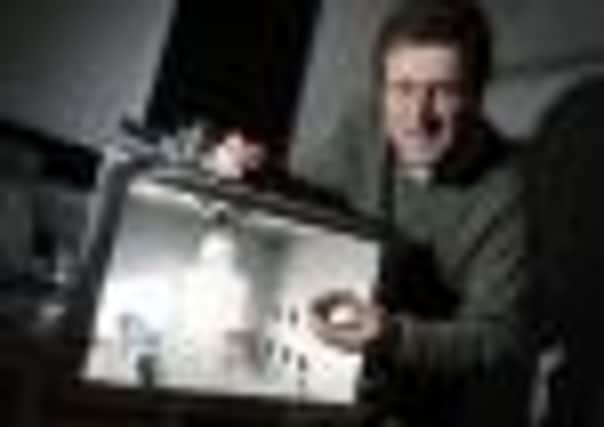University bid to find signs of alien life


With a new simulator which can recreate conditions on other worlds at their fingertips, city scientists are to increase efforts to make contact.
Edinburgh University’s new UK Centre for Astrobiology is to spearhead Britain’s hunt for aliens – bringing together researchers from 15 institutions across the country.
Advertisement
Hide AdAdvertisement
Hide AdAs well as boasting the state-of-the-art £300,000 planetary simulator, the new centre will also help build robots that will land on asteroids.
Professor Charles Cockell, an internationally renowned astrobiologist who will lead the centre, said it would act as the focal point for a collaborative network. He said: “This field has taken huge steps forward recently and we have much more data coming in now from other planets.
“It’s become a lot easier to understand whether conditions on those planets are habitable and if life could exist there.”
The centrepiece of the new base at King’s Buildings will be the simulator – a cutting-edge “vacuum chamber” recreating atmospheric conditions on planets such as Mars.
But Professor Cockell said his team’s search would not focus exclusively on outer space.
Among the trailblazing technologies deployed will be a laboratory buried more than a kilometre underground in Boulby Mine, Yorkshire, which will enable the study of creatures living deep below the surface of the Earth.
Studying extreme environments on this planet will bring scientists closer than ever before to understanding where and how life could survive on worlds light years from our own.
Prof Cockell said: “It’s all about better knowledge of extreme environments in outer space based on extreme environments right here on Earth.
Advertisement
Hide AdAdvertisement
Hide Ad“The underground lab in Yorkshire is actually part of a lab that’s already there and being used for dark matter research. The mine itself, which is a salt mine, is also still in use and it’s very deep. You have things living in the salt which are unique.
“The environments on Mars, for example, are salty and studying life this deep might also tell us something about life on that planet.
“Of course, it’s very difficult to search for intelligent life and there hasn’t been any evidence that it exists. But essentially, we’ll be looking at all possible forms of life. Astrobiologists are interested in looking for Earth-like planets around other stars, which could host micro-organisms or intelligent life.”
University bosses have said the new centre would revolutionise the study of extraterrestrial life. Professor Lesley Yellowlees, vice principal and head of the college of science and engineering, said: “We are excited with the opening of the new UK Centre for Astrobiology, which will bring together scientists interested in understanding the environments that can support life here on Earth and beyond.”
Still seeing red
THE machines which Edinburgh scientists will develop at the UK Centre for Astrobiology are the latest example of robotic space exploration.
Nasa’s Curiosity rover – 10ft long and weighing almost a tonne – landed on Mars’s equator in August last year. Last month, it found an ancient network of rivers which could have made parts of it habitable for microbial life.
The space agency has announced a follow-up, scheduled to be launched in 2020.
Not all such ventures have been successful.
The Soviet Union’s Mars 2 space probe crashed in November 1971. Mars 3 landed the following month, but ceased transmission within 15 seconds.
In July 1976, Nasa’s Viking 1 was the first Mars success, while Britain’s Beagle 2, which was due to land on Christmas Day 2003, was lost after separating from its mothership.